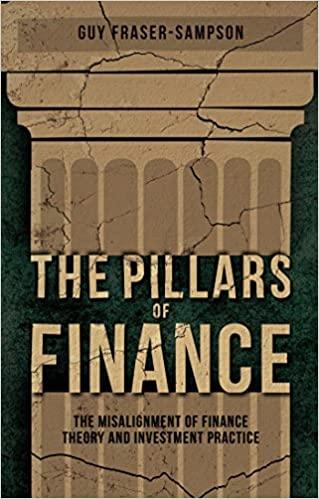Question
1. The price of a stock is $10 at the beginning of the year and $5 at the end of the year. If the stock
1. The price of a stock is $10 at the beginning of the year and $5 at the end of the year. If the stock paid a $2 dividend and inflation was 10%, what is the real holding-period return for the year?
2. Which of the following correlation coefficients will produce the most diversification benefits? A. A. 1.0 B. 0.37 C. 0 D. -0.37 E. -0.52
3. 9. An investor buys $16,000 worth of a stock priced at $20 per share using 60% initial margin. The broker charges 8% on the margin loan and requires a 35% maintenance margin. The stock pays a $.50-per-share dividend in 1 year, and then the stock is sold at $23 per share. What was the investor's rate of return? a. 17.5% b. 19.67% c. 23.83% d. 25.75%
4. The buyer of a new home is quoted a mortgage rate of 0.5% per month. What is the APR on the loan? a. 0.5% b. 5% c. 6.16% d.6% e.6.5%
please show specific steps include the formula, thank you.
Step by Step Solution
There are 3 Steps involved in it
Step: 1

Get Instant Access to Expert-Tailored Solutions
See step-by-step solutions with expert insights and AI powered tools for academic success
Step: 2

Step: 3

Ace Your Homework with AI
Get the answers you need in no time with our AI-driven, step-by-step assistance
Get Started


